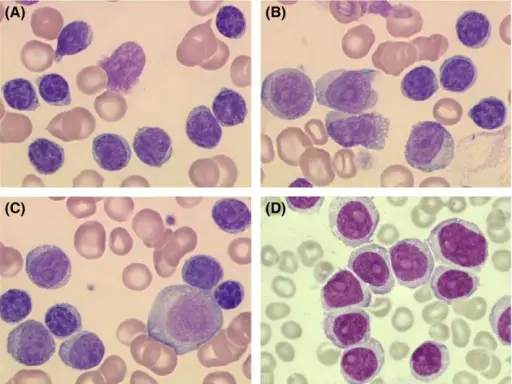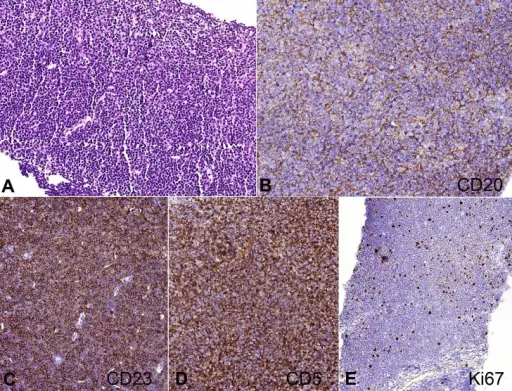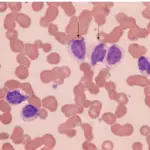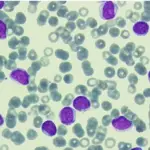Chronic lymphocytic leukemia/small lymphocytic lymphoma is the most common leukemia of adults in the Western World. It is a type of leukemia involving lymphocytes that progresses more slowly than other types of leukemia. CLL and SLL differ only in the degree of peripheral blood lymphocytosis.
What is the Pathology of Chronic Lymphocytic Leukemia/Small Lymphocytic Lymphoma?
The pathology of chronic lymphocytic leukemia/small lymphocytic lymphoma is:
-Etiology: The cause of chronic lymphocytic leukemia/small lymphocytic lymphoma is unknown.
-Genes involved: Deletions of 13q14.3, 11q, 17p and trisomy 12q.
-Pathogenesis: The sequence of events that lead to chronic lymphocytic leukemia/small lymphocytic lymphoma involve loss of tumor suppressor genes, and over expression of anti-apoptotic protein BCL2 that is observed in CLL/SLL.
-Histology: The histology associated with chronic lymphocytic leukemia/small lymphocytic lymphoma shows small lymphocytes with condensed chromatin and scant cytoplasm. A characteristic finding are Smudge cells, which are disrupted tumor cells. Larger activated lymphocytes that often gather in loose aggregates are referred to as proliferation centers, which are pathognomonic for CLL/SLL. These contain mitotically active cells.
How does Chronic Lymphocytic Leukemia/Small Lymphocytic Lymphoma Present?
Patients with chronic lymphocytic leukemia/small lymphocytic lymphoma are typically diagnosed at a median age of 60 years and there is a 2:1 male predominance. The symptoms, features, and clinical findings associated with chronic lymphocytic leukemia/small lymphocytic lymphoma include easy fatigability, weight loss and anorexia. Most often patients are asymptomatic at diagnosis. Generalized lymphadenopathy and hepatosplenomegaly may be present.
How is Chronic Lymphocytic Leukemia/Small Lymphocytic Lymphoma Diagnosed?
Chronic lymphocytic leukemia/small lymphocytic lymphoma is diagnosed variably. It may be through peripheral blood smear and a complete blood count or it may be through immunophenotyping. CLL/SLL has a distinctive immunophenotype. The tumor cells express the pan B-cell markers CD19, CD20, CD23 and CD5. Low level expression of surface Ig (usually IgM is also typical).
How is Chronic Lymphocytic Leukemia/Small Lymphocytic Lymphoma Treated?
Chronic lymphocytic leukemia/small lymphocytic lymphoma is treated chemotherapy and immunotherapy with antibodies against proteins, particularly CD20.
What is the Prognosis of Chronic Lymphocytic Leukemia/Small Lymphocytic Lymphoma?
The prognosis of chronic lymphocytic leukemia/small lymphocytic lymphoma is extremely variable and depend primarily on the clinical stage. Overall median survival is 4 to 6 years but is more than 10 years in individuals with minimal tumor burden at diagnosis.




